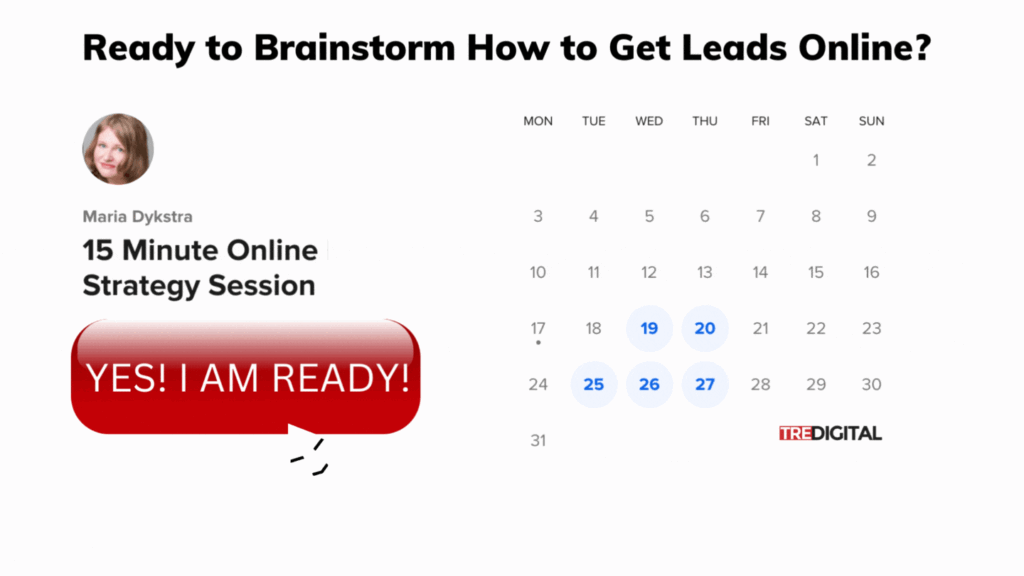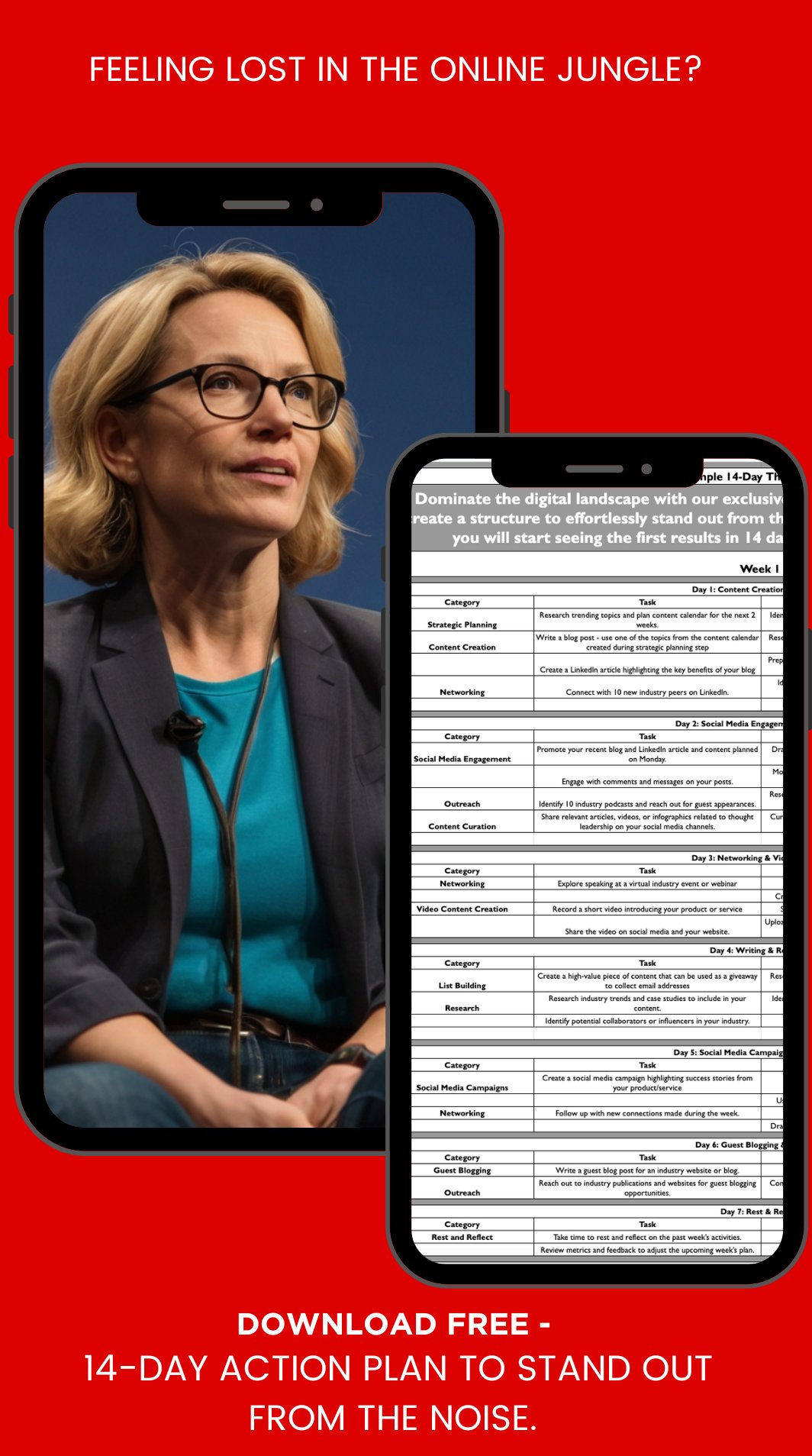Organic traffic is the key to success in the fast-paced world of business. It’s what brings potential customers to your doorstep and helps you make more sales.
But how do you increase your organic search traffic?
What are the most important on-page SEO elements?
In this blog post, we’ll answer the 17 most pressing questions you have about online business SEO. We’ll unlock the secrets of organic traffic success and help you achieve e-commerce greatness.
Table of Contents
Toggle1 – How can we increase our website’s organic search traffic effectively and sustainably?
Earning organic traffic is not easy. It takes time, effort, and expertise. However, it is one of the most valuable investments you can make for your website. Organic traffic is traffic that comes from search engines like Google, and it is the most sustainable and cost-effective way to attract visitors to your site.
There are 4 key areas of focus that can help with your long-term organic traffic strategy:
1 – Keyword research:
Identify the keywords that your target audience is searching for, and then create content and optimize your pages around those keywords.
- Use a keyword research tool to identify relevant keywords with a good search volume and low competition.
- Consider long-tail keywords, which are more specific and less competitive than short-tail keywords.
- Use your keyword research to inform your content creation and on-page SEO efforts.
2 – Content creation:
Produce high-quality, informative content that is relevant to your target audience and provides them with value.
- Write informative and engaging content that is relevant to your target audience and provides them with value.
- Use your target keywords throughout your content, but in a natural and non-spammy way.
- Optimize your content for search engines by using relevant title tags, meta descriptions, and header tags.
3 – Technical SEO:
Make sure your website is technically sound and easy for search engines to crawl and index.
- Make sure your website is mobile-friendly.
- Improve your website’s loading speed.
- Fix any broken links or errors on your website.
- Create a sitemap and submit it to search engines.
4 – Link building:
Earn high-quality backlinks from other websites to your own.
- Create high-quality content that other websites will want to link to.
- Reach out to other websites in your industry and ask for backlinks.
- Guest blog on other websites and include links back to your own website.
2 – (Technical SEO) What are the most critical on-page SEO elements to focus on to improve our organic rankings?
Improving organic rankings through on-page SEO is a crucial step to boosting your website’s visibility and traffic. By optimizing key elements on your web pages, you can help search engines understand your content better and index it more accurately.
Here are some of the most important on-page SEO elements to focus on:
- Keywords: Choose the right keywords for your content and audience. Include them naturally in your title tag, meta description, headers, and throughout your content.
- Title tags: Write clear and concise title tags that accurately reflect the content of your page. Include your primary keyword at the beginning of the title tag.
- Meta descriptions: Write engaging meta descriptions that summarize your page’s content and encourage users to click. Include your primary keyword in the meta description.
- Header tags: Use header tags (H1, H2, H3, etc.) to structure your content logically and indicate its importance to search engines. Include keywords in your headers.
- Content quality: Focus on high-quality, informative, and engaging content that meets your target audience’s needs. Longer content often performs better in search results, but it should always be valuable.
- Keyword density: Avoid keyword stuffing, but make sure your keywords appear naturally throughout your content. Aim for a balanced and user-friendly approach.
- Image optimization: Optimize images for faster page loading and accessibility. Use descriptive alt tags to describe the images to search engines and screen readers.
- Internal linking: Link to related pages on your website within your content. This helps search engines understand your site’s structure and distribute link equity.
- Mobile-friendliness: Ensure your website is mobile-friendly and displays well on all devices. Google prioritizes mobile-friendly websites in search results.
- Page load speed: Improve page load times by optimizing images, leveraging browser caching, and reducing server response times. Faster pages tend to rank higher.
- URL structure: Use clean and descriptive URLs that include relevant keywords. Avoid using long strings of numbers or random characters.
- Canonical tags: Use canonical tags to indicate the preferred version of a page if you have similar or duplicate content.
- Schema markup: Use schema markup to provide search engines with structured data about your content, such as product reviews, recipes, or events.
- User experience (UX): Create a user-friendly design with easy navigation, clear calls to action, and a visually appealing layout.
- Secure connection (HTTPS): Use secure, encrypted connections for your website. Google favors HTTPS sites and may rank them higher.
- Breadcrumbs: Implement breadcrumbs for improved site navigation and better understanding of content structure.
- Social sharing buttons: Add social sharing buttons to encourage users to share your content on social media, which can indirectly impact your rankings.
- Geo-targeting (if applicable): If your business serves specific geographic locations, use geotargeting tags to indicate this to search engines.
3 – (Keyword SEO) Are there specific strategies or tactics for targeting long-tail keywords that are relevant to our products or services?
Targeting long-tail keywords can be a great way to drive organic traffic to your website. Long-tail keywords are more specific and less competitive than short-tail keywords, so they can be easier to rank for.
Here are some tips for targeting long-tail keywords effectively:
- Do your keyword research. Use keyword research tools to identify long-tail keywords that are relevant to your products or services and have a decent search volume. Use keyword research tools like Google Keyword Planner, SEMrush, or Ahrefs to discover these phrases.
- Understand user intent. What are people searching for when they use these long-tail keywords? Are they looking for information, product comparisons, or purchase-ready queries? Tailor your content to match the specific intent of the keyword.
- Create high-quality content. Your content should be informative, engaging, and relevant to the long-tail keywords you’re targeting.
- Use keywords naturally. Avoid keyword stuffing, which can harm your SEO efforts. Instead, integrate keywords naturally into your content in a way that makes sense and provides value to your readers.
- Optimize your content structure. Use header tags (H2, H3, etc.) to structure your content and include long-tail keywords in subheadings where relevant. This makes your content more scannable and SEO-friendly.
- Optimize for local search. If your business serves specific locations, consider optimizing for long-tail keywords that include local modifiers, like city names or “near me” phrases.
- Optimize for voice search. Voice search is becoming increasingly popular, so it’s important to create content that answers common questions and conversational queries related to your products or services. These queries often take the form of long-tail keywords.
- Make sure your website is user-friendly. A positive user experience can contribute to better rankings, including for long-tail keyword searches.
- Regularly update and refresh your content. This will help you stay relevant and competitive in search results.
- Monitor and adjust your strategy. Regularly monitor the performance of your long-tail keyword-optimized content. Pay attention to rankings, organic traffic, and user engagement metrics. Adjust your strategy based on the data.
- Analyze your competitors. What long-tail keywords are your competitors targeting? What are their strategies?
- Encourage user-generated content. User-generated content, such as reviews or testimonials, may contain long-tail keywords that are naturally used by your customers.
By following these tips, you can effectively target long-tail keywords and attract a more specific and engaged audience to your website.
4 – (Content SEO) What role does high-quality, keyword-optimized content play in attracting organic traffic, and how do we create content that resonates with our audience?
High-quality, keyword-optimized content plays a vital role in attracting organic traffic to your website. Search engines like Google use content to understand what your website is about and how it can be helpful to users. When users search for keywords related to your content, your website is more likely to rank higher in search results if your content is relevant, informative, and well-optimized.
To create content that resonates with your audience, you need to understand their needs and interests. What are they searching for online? What kind of content do they find valuable? Once you have a good understanding of your audience, you can create content that is tailored to their specific needs.
In addition to the obvious tactics (choosing the right keywords, writing informative and engaging content, using keywords naturally, etc) focus on these additional tips for creating content that resonates with your audience:
- Be authentic. Write in your own voice and share your own unique perspective. People can spot a fake from a mile away, so be genuine and authentic in your writing.
- Be helpful. Focus on creating content that is helpful and informative to your audience. What can you teach them? How can you help them solve a problem or achieve a goal?
- Be consistent. Publish new content on a regular basis. This will help you keep your audience engaged and coming back for more.
- Interact with your audience. Respond to comments and questions on your blog and social media posts. This shows your audience that you care about their feedback and that you’re invested in building a community.
5 – (Linkbuilding SEO) How can we acquire backlinks from authoritative websites to improve our website’s domain authority and search rankings?
There are a number of ways to acquire backlinks from authoritative websites to improve your website’s domain authority and search rankings. Here are a few tips:
- Create high-quality content. The best way to attract backlinks is to create high-quality content that other websites will want to link to. This could include blog posts, infographics, videos, or other types of content that are informative, engaging, and relevant to your target audience.
- Guest blog. Guest blogging is a great way to get your content published on other websites and build backlinks. When you guest blog, you write an article for another website in exchange for a link back to your own website. To find guest blogging opportunities, you can search for websites in your industry that accept guest posts.
- Promote your content. Once you have created high-quality content, you need to promote it so that people can find it and link to it. Share your content on social media, email it to your subscribers, and submit it to relevant directories. You can also reach out to other bloggers and influencers in your industry and ask them to share your content.
- Build relationships with other websites. One of the best ways to get backlinks from authoritative websites is to build relationships with the people who own and manage those websites. You can do this by connecting with them on social media, commenting on their blog posts, and sharing their content. Once you have established a relationship, you can reach out to them and ask if they would be interested in linking to your website.
- Use broken link building. Broken link building is a technique where you find broken links on other websites and then reach out to the website owner and offer to replace the broken link with a link to your own website. To find broken links, you can use a tool like Ahrefs or SEMrush.
- Create infographics. Infographics are a great way to present complex information in a visually appealing way. They are also very shareable, which can help you attract backlinks to your website. When you create an infographic, be sure to include a link back to your website in the image and in the accompanying text.
- Submit your website to directories. There are a number of online directories where you can submit your website for free. When you submit your website to a directory, be sure to include a link back to your website in the description.
- Monitor your backlinks. It is important to monitor your backlinks to make sure that they are from high-quality websites. You can use a tool like Google Search Console to monitor your backlinks.
Building backlinks from authoritative websites takes time and effort, but it is one of the most effective ways to improve your website’s domain authority and search rankings. You will also need to:
- Be selective about the websites you target. Not all backlinks are created equal. A backlink from a high-quality website is more valuable than a backlink from a low-quality website. When you are targeting websites for backlinks, make sure to focus on websites that are relevant to your industry and have a high domain authority.
- Create linkable assets. Linkable assets are content that is likely to be linked to by other websites. This could include blog posts, infographics, videos, or other types of content that are informative, engaging, and relevant to your target audience.
- Make it easy for other websites to link to you. Include social sharing buttons on your website and make sure that your content is easy to copy and paste. You can also create a link page on your website where you list all of the websites that have linked to you.
6 – (Technical SEO) What technical SEO enhancements are necessary to optimize our website for search engines, and how can we resolve common technical issues?
Technical SEO enhancements are necessary to optimize your website for search engines so that they can crawl, index, and rank your pages correctly. Some common technical SEO issues include:
- Website speed: Your website should load quickly on both desktop and mobile devices. Google’s PageSpeed Insights tests your website’s speed and get recommendations for improvement. Improve your website’s speed by optimizing your images, using a content delivery network (CDN), and minifying your code.
- Mobile-friendliness: Your website should be mobile-friendly, meaning that it displays and functions well on all devices, including smartphones and tablets. Google’s Mobile-Friendly Test tool helps test your website’s mobile-friendliness. Make your website mobile-friendly by using a responsive design or by creating a separate mobile website.
- Sitemap: A sitemap is a file that lists all of the pages on your website. It helps search engines to crawl and index your pages more efficiently. One of the best tools for creating a sitemap for your website is XML Sitemap Generator. Once created, submit a sitemap to search engines using Google Search Console or Bing Webmaster Tools.
- Robots.txt: A robots.txt file tells search engines which pages on your website they are allowed to crawl and index. Use a tool like Robots.txt Generator to create a robots.txt file for your website.
- Broken links: Broken links are links that lead to pages that no longer exist. Broken links can frustrate users and can also damage your website’s SEO. Use a tool like Ahrefs or SEMrush to find and fix broken links on your website. Fix broken links by replacing them with working links or by redirecting them to other relevant pages on your website.
- Duplicate content: Duplicate content is content that appears on multiple pages on your website or on other websites. Duplicate content can confuse search engines and can also damage your website’s SEO. Copyscape helps find duplicate content on your website. Remove duplicate content by combining pages with similar content or by redirecting duplicate pages to a single canonical page.
- Use structured data: Structured data is a way to provide additional information about your website to search engines. This can help search engines to better understand your content and display it more prominently in search results.
- Use HTTPS: HTTPS is a secure protocol that encrypts data between your website and visitors’ browsers. Using HTTPS can improve your website’s SEO and security.
- Use a content management system (CMS): A CMS can help you to manage your website’s content and technical SEO more easily. There are a number of popular CMS platforms available, such as WordPress, Drupal, and Joomla.
7 – (Technical SEO) How can we use structured data (schema markup) to enhance our search results with rich snippets and attract more clicks?
Structured data
Structured data, also known as schema markup, is a way to provide additional information about your website to search engines. This can help search engines to better understand your content and display it more prominently in search results.
Rich snippets
Rich snippet are enhanced search results that include additional information, such as product ratings, event dates, and recipes. Rich snippets can make your search results more informative and visually appealing, which can lead to more clicks.
How to use structured data
To use structured data to enhance your search results with rich snippets, you need to add schema markup to your website. Schema markup is a type of code that you can add to your website’s HTML. There are a number of different schema markup types, each of which is used to provide different types of information to search engines.
For example, if you have a product page on your website, you can use product schema markup to provide information about the product, such as its name, price, and ratings. This information can then be used to display a rich snippet for your product in search results.
To get started with structured data, you can use Google’s Structured Data Markup Helper. This tool helps you to generate schema markup for your website without having to write any code.
Once you have added schema markup to your website, you need to submit it to Google. You can do this using Google Search Console.
Google may not display rich snippets for all of your pages, even if you have added schema markup. However, by adding schema markup to your website, you increase your chances of getting rich snippets displayed in search results.
Here are some tips for using structured data to attract more clicks:
- Use rich snippets for popular content types. Rich snippets are most commonly displayed for content types such as products, recipes, events, and reviews. If you have content that falls into one of these categories, be sure to add schema markup to it.
- Make your rich snippets informative and visually appealing. Use rich snippets to provide users with valuable information about your content, such as product ratings, event dates, and recipe ingredients. You can also use rich snippets to make your search results more visually appealing by using images and videos.
- Test your rich snippets. Once you have added schema markup to your website, be sure to test your rich snippets to make sure that they are displaying correctly. You can use Google’s Rich Results Test tool to test your rich snippets.
8 – (Technical SEO) What is the importance of mobile-friendliness and site speed in attracting organic traffic, and how can we improve in these areas?
Mobile-friendliness and site speed are two of the most important factors in attracting organic traffic.
Mobile-friendliness is important because more and more people are using their smartphones and tablets to access the internet. In fact, mobile devices now account for over half of all web traffic. If your website is not mobile-friendly, users will have a difficult time viewing and interacting with it, and they are more likely to leave.
Site speed is also important because users expect websites to load quickly. If a website takes too long to load, users are likely to abandon it and go to a different website.
Both mobile-friendliness and site speed are important ranking factors for search engines. This means that websites that are mobile-friendly and have fast loading times are more likely to rank higher in search results.
To improve your website’s mobile-friendliness, you can use a responsive design. A responsive design ensures that your website looks good and functions well on all devices, including smartphones, tablets, and laptops.
To improve your website’s site speed, you can optimize your images, use a content delivery network (CDN), and minify your code. You can also use a tool like Google’s PageSpeed Insights to test your website’s speed and get recommendations for improvement.
By improving your website’s mobile-friendliness and site speed, you can attract more organic traffic and improve your search engine rankings.
Here are some additional tips for improving mobile-friendliness and site speed:
- Use a mobile-first approach. This means designing your website for mobile devices first and then adapting it for desktop devices.
- Use large fonts and buttons. This will make it easier for users to tap on links and buttons on their mobile devices.
- Avoid using too much text on your mobile pages. Break up your text into smaller chunks and use images and videos to break up the text.
- Use a compressed image file format, such as JPEG or PNG. This will reduce the size of your images and make your pages load faster.
- Use a content delivery network (CDN). A CDN is a network of servers that deliver your website’s content to users from the server that is closest to them. This can improve your website’s loading times, especially for users who are located far away from your website’s server.
- Minify your code. This means removing unnecessary spaces and characters from your code. This will reduce the size of your code and make your pages load faster.
9 – (Technical SEO) Should we prioritize local SEO strategies, and if so, how do we optimize our website for local search results and Google My Business?
Whether or not you should prioritize local SEO strategies depends on your business goals and target audience. If you have a local business that serves customers in a specific geographic area, then local SEO is essential. Local SEO can help you to attract more customers from your local area and improve your visibility in local search results.
To optimize your website for local search results, you can:
- Claim and verify your Google My Business profile. This is one of the most important things you can do to improve your local SEO. Google My Business allows you to manage your business information on Google, including your name, address, phone number, and website.
- Optimize your website’s title tags and meta descriptions. Include your target location in your title tags and meta descriptions. This will help search engines to understand that your website is relevant to local search results.
- Create local content. Write blog posts and articles that are relevant to your local audience. You can also create landing pages for specific geographic areas.
- Get local backlinks. Backlinks from other local websites can help to improve your local SEO. You can get local backlinks by reaching out to other local businesses and asking them to link to your website.
- Use geotagging on your social media posts. This will help search engines to understand that your business is located in a specific geographic area.
- Participate in local events and sponsor local organizations. This is a great way to get your business name out there and build relationships with potential customers.
- Run local search ads. Local search ads can be a great way to reach potential customers who are already searching for businesses like yours in their local area.
To optimize your Google My Business profile, you can:
- Complete all of the information in your profile. This includes your business name, address, phone number, website, hours of operation, and categories.
- Add photos and videos to your profile. This will make your profile more visually appealing and engaging.
- Get reviews from customers. Positive reviews can help to improve your ranking in local search results.
- Respond to reviews. This shows that you care about your customers and that you are responsive to their feedback.
10 – (Technical SEO) What are some of the most common SEO mistakes that we should avoid to prevent potential penalties or drops in organic rankings?
Here are some of the most common SEO mistakes that you should avoid to prevent potential penalties or drops in organic rankings:
- Keyword stuffing: Keyword stuffing is the practice of overloading your content with keywords in an unnatural way. This can make your content difficult to read and can lead to a penalty from search engines.
- Duplicate content: Duplicate content is content that appears on multiple pages on your website or on other websites. Duplicate content can confuse search engines and can also damage your website’s SEO.
- Broken links: Broken links are links that lead to pages that no longer exist. Broken links can frustrate users and can also damage your website’s SEO.
- Thin content: Thin content is content that is low in quality and does not provide much value to users. Search engines are less likely to rank thin content highly in search results.
- Poor website structure: Poor website structure can make it difficult for search engines to crawl and index your website. This can lead to a drop in organic rankings.
- Not using HTTPS: HTTPS is a secure protocol that encrypts data between your website and visitors’ browsers. Google prefers HTTPS websites and may rank them higher in search results.
- Not optimizing for mobile: More and more people are using their smartphones and tablets to access the internet. If your website is not mobile-friendly, users will have a difficult time viewing and interacting with it, and they are more likely to leave. This can lead to a drop in organic rankings.
- Not creating high-quality content: High-quality content is essential for good SEO. Search engines are more likely to rank websites with high-quality content higher in search results.
- Not promoting your website: Once you have created high-quality content, you need to promote it so that people can find it. Share your content on social media, email it to your subscribers, and submit it to relevant directories.
To improve your website’s SEO performance and avoid potential penalties or drops in organic rankings:
- Regularly audit your website for SEO issues. There are a number of tools and services that can help you to audit your website for SEO issues. By regularly auditing your website, you can identify and fix SEO issues before they cause problems.
- Keep up with the latest SEO trends. SEO is constantly evolving, so it is important to keep up with the latest trends and best practices. You can do this by reading SEO blogs and articles, attending SEO conferences, and following SEO experts on social media.
- Work with an SEO expert. If you are not comfortable with SEO, you can work with an SEO expert to help you improve your website’s SEO performance. An SEO expert can help you to identify and fix SEO issues, create high-quality content, and promote your website.
11 – (General) How can we monitor our organic search traffic and measure the effectiveness of our SEO efforts, and what are the key metrics to watch?
There are a number of ways to monitor your organic search traffic and measure the effectiveness of your SEO efforts. One of the best ways is to use a tool like Google Analytics. Google Analytics provides a variety of metrics that you can use to track your organic search traffic, such as:
- Organic traffic: The number of visitors to your website who came from organic search results.
- Organic search rankings: The average ranking of your website’s pages in search results for specific keywords.
- Organic click-through rate (CTR): The percentage of users who click on your website’s link in search results.
- Organic conversion rate: The percentage of users who visit your website from organic search and then complete a desired action, such as making a purchase or signing up for your email list.
In addition to these metrics, you can also use Google Analytics to track other metrics that are relevant to your business goals, such as the number of leads generated from organic search or the amount of revenue generated from organic search.
Another way to monitor your organic search traffic is to use a tool like Google Search Console. Google Search Console provides a number of reports that can help you to track your website’s performance in search results, such as:
- Search Analytics: This report shows you the number of clicks and impressions that your website has received from organic search, as well as the average ranking of your website’s pages for specific keywords.
- Links: This report shows you the number of backlinks that your website has, as well as the websites that are linking to you.
- Performance: This report shows you the number of clicks and impressions that your website has received from organic search, as well as the average click-through rate (CTR) and position of your website’s pages in search results.
Always start measuring the effectiveness of your SEO efforts:
- Set goals. What do you want to achieve with your SEO efforts? Do you want to increase organic traffic to your website? Do you want to improve your organic search rankings? Do you want to generate more leads or sales from organic search? Once you know your goals, you can track the metrics that are most relevant to your goals.
- Track your progress over time. Don’t just look at your organic search traffic and SEO metrics on a daily or weekly basis. Instead, track your progress over time so that you can see how your SEO efforts are impacting your website’s performance.
- Compare your results to your competitors. You can use a tool like Ahrefs or SEMrush to compare your organic search traffic and SEO metrics to your competitors. This can help you to identify where you need to improve.
- Make adjustments to your SEO strategy as needed. Based on your analysis of your organic search traffic and SEO metrics, make adjustments to your SEO strategy as needed. For example, if you see that a particular keyword is not ranking well in search results, you may need to optimize your content for that keyword.
12 – (General) Are there any industry-specific or niche-specific SEO strategies we should consider to stand out in our market?
there are a number of industry-specific or niche-specific SEO strategies that you can consider to stand out in your market. Here are a few ideas:
- Industry-specific Content: blog posts, articles, infographics, or videos. For instance, as a dentist, you might produce content about the latest dental care trends or create educational videos on proper teeth brushing.
- Build Industry Relationships: Strengthen your SEO by forging connections with other professionals in your industry. Collaborate through guest blogging, content sharing on social media, or attending industry events. Building relationships with peers can lead to valuable backlinks and improved search rankings.
- Engage in Industry Communities: Participate in both online and offline communities related to your industry. Engaging in these communities offers opportunities to stay informed about industry trends, network with professionals, and promote your website. Consider joining industry associations or following influential figures on social media.
- Use Targeted Landing Pages: Create dedicated landing pages for specific products, services, or industry-specific topics. This enhances your search rankings for relevant keywords and provides a better user experience.
- Leverage Long-Tail Keywords: Opt for long-tail keywords that are more specific and less competitive. This increases your chances of ranking higher and attracting visitors genuinely interested in your offerings. For example, focus on “best dentist in [city name]” instead of just “dentist.”
- Optimize for Local Search: If you run a local business, ensure your website is optimized for local search. This includes claiming your Google My Business profile and ensuring your website is listed in local directories.
- Promote on Industry Platforms: Besides promoting content on your website and social media, extend your reach to industry-specific websites and social media platforms. This broader exposure allows you to connect with a wider audience and build relationships with fellow professionals in your field.
14 – (Content SEO) Should we focus on user-generated content and customer reviews as a means of increasing trust and attracting more organic traffic?
User-generated content (UGC) is any type of content that is created by your users, such as product reviews, blog comments, and social media posts. UGC is a great way to build trust with potential customers and to show them that other people have had positive experiences with your products or services.
Customer reviews are a type of UGC that is especially valuable. Customer reviews can help to improve your search engine rankings, increase your conversion rates, and reduce your return rates.
Some of the benefits of focusing on user-generated content and customer reviews:
- Increased trust: When potential customers see that other people have had positive experiences with your products or services, they are more likely to trust you and to do business with you.
- Improved search engine rankings: Search engines like Google value UGC and customer reviews. Websites with high-quality UGC and customer reviews are more likely to rank higher in search results.
- Increased conversion rates: When potential customers see positive customer reviews, they are more likely to convert into paying customers.
- Reduced return rates: Customer reviews can help you to identify and fix any problems with your products or services. This can lead to a reduction in return rates.
Here are some tips for encouraging user-generated content and customer reviews:
- Make it easy for users to create content. Your website should have features that make it easy for users to create content, such as product review forms and social sharing buttons.
- Encourage users to share their experiences. You can encourage users to share their experiences by offering incentives, such as discounts or coupons.
- Respond to customer reviews. When customers leave reviews, be sure to respond to them, both positive and negative reviews. This shows that you care about your customers and that you value their feedback.
15 – (Content SEO) How can we leverage content repurposing and optimization of existing content to drive additional organic traffic?
By repurposing and optimizing your existing content, you can drive additional organic traffic to your website without having to create all new content. This is a great way to save time and resources, and it’s a great way to get the most out of your existing content.
- Identify your best performing content. Use Google Analytics to identify your most popular blog posts, landing pages, and other types of content. This content is already resonating with your audience, so it’s a good place to start when repurposing and optimizing your content.
- Update your existing content. Make sure your existing content is up-to-date and accurate. You may also want to add new information, such as new statistics, case studies, or customer testimonials.
- Repurpose your content into different formats. You can repurpose your content into different formats, such as blog posts, infographics, videos, or social media posts. This will help you to reach a wider audience and to attract new visitors to your website.
- Turn a blog post into an infographic. Infographics are a great way to present complex information in a visually appealing way. They are also very shareable, which can help you to attract backlinks to your website.
- Turn a blog post into a video. Videos are another great way to repurpose your content and to reach a wider audience. You can create videos that summarize your blog posts, or you can create videos that provide additional information on the topics that you cover in your blog posts.
- Turn a blog post into a social media post. You can repurpose your blog posts into social media posts by sharing excerpts from your posts or by creating images or videos that summarize your posts.
- Turn a blog post into a guest blog post. You can repurpose your blog posts into guest blog posts by submitting them to other websites in your industry. This is a great way to reach a new audience and to build backlinks to your website.
- Optimize your content for search engines. When you’re repurposing and optimizing your content, be sure to optimize it for search engines. This includes using relevant keywords throughout your content and including meta descriptions and title tags.
- Promote your repurposed content. Once you’ve repurposed and optimized your content, be sure to promote it on your website and social media channels. You can also submit your content to relevant directories and websites.
16 – (General) What trends and emerging technologies in SEO should we be aware of to stay ahead of the competition and future-proof our organic traffic strategies?
Here are some trends and emerging technologies in SEO that you should be aware of to stay ahead of the competition and future-proof your organic traffic strategies:
- Artificial intelligence (AI): AI is already playing a major role in SEO, and its importance is only going to grow in the future. AI can be used to automate tasks, generate content, and analyze data in ways that humans never could.
- Natural language processing (NLP): NLP is a branch of AI that deals with the interaction between computers and human language. NLP is being used to improve search engine results by better understanding the meaning of search queries and the content of websites.
- Machine learning (ML): ML is a type of AI that allows computers to learn without being explicitly programmed. ML is being used to improve search engine results by ranking websites based on their relevance to search queries and the quality of their content.
- Voice search: Voice search is becoming increasingly popular, and SEO professionals need to start optimizing their websites for voice search. This includes using keywords that people are likely to use when searching with their voices and optimizing your content for featured snippets.
- Visual search: Visual search is another emerging technology that is having an impact on SEO. SEO professionals need to optimize their images for visual search and create content that is visually appealing.
17 – (General) What is the relationship between organic traffic and other marketing channels, such as social media, email marketing, and paid advertising, and how can we integrate these efforts effectively?
Organic traffic and other marketing channels, such as social media, email marketing, and paid advertising, are all interconnected. When used together effectively, they can help you to reach a wider audience, generate more leads, and increase sales.
Here are some tips for integrating your organic traffic and other marketing efforts effectively:
- Use consistent branding: Your branding should be consistent across all of your marketing channels. This will help to create a cohesive experience for your customers and prospects.
- Create a content calendar: A content calendar can help you to plan and coordinate your content marketing efforts across all of your marketing channels. This will help you to ensure that you are consistently publishing high-quality content.
- Use social media to promote your content: Share your content on social media and include links back to your website. You can also use social media to run contests and giveaways to generate excitement and interest in your products or services.
- Use email marketing to promote your content: Include links to your content in your email newsletters. You can also use email marketing to promote special offers and discounts.
- Use paid advertising to promote your content and target specific keywords and demographics: Target your paid advertising campaigns to the right audience and use relevant keywords.
CONCLUSION:
SEO can be a complex and ever-changing topic, but by following these three simple tips, you can well on your way to success:
- Be patient and consistent. SEO takes time to work, so don’t get discouraged if you don’t see results immediately. Just keep creating high-quality content, building backlinks, and optimizing your website, and you’ll eventually start to see improvement.
- Track your results. It’s important to track your SEO progress so that you can see what’s working and what’s not. There are a number of different SEO tools available that can help you with this.
- Stay up-to-date. SEO is constantly evolving, so it’s important to stay up-to-date on the latest trends and best practices. You can do this by reading SEO blogs and articles, attending SEO conferences, and following SEO experts on social media.
Do you have any other questions about SEO? Please share them in the comments below and I’ll do my best to answer them.










